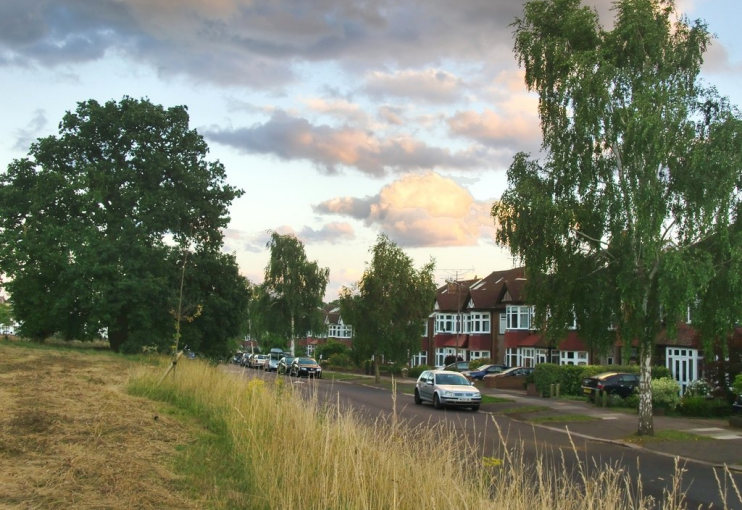Cannon Hill
Cannon Hill, Merton
The green and pleasant south-eastern corner of Raynes Park, some of which lies above the 70 foot contour – about 30 feet higher than most of its surroundings

For centuries this was part of the ‘waste’ land of Merton manor, wild and uncultivated. When the canons of Merton Priory acquired the manor in 1121, they set about improving the land and eventually sold it for farming.
In 1763 William Taylor built Cannon Hill House, an impressive stuccoed mansion with surrounding parkland adjoining Cannon Hill Farm. A City businessman, Richard Thornton, bought the estate in 1832 and lived in the house until his death in 1865.
Edward Rayne, meanwhile, acquired most of the neighbouring farmland as part of his West Barnes estate. Thornton left over £3 million in his will, the largest fortune of his times, which was progressively dissipated throughout an ever-extending family. The Cannon Hill estate remained in the hands of the executors until the First World War. The grounds continued to be used by the Thornton family for game shooting, while the house became dilapidated and had to be demolished.
In the 1920s the council built the pleasing Whatley and Cannon Hill estates, while builder George Blay laid out a series of roads, including those branching off Grand Drive, and followed this with developments around Cannon Hill Lane during the 1930s. Blay’s properties were mostly affordable but well-proportioned terraced houses supported by council subsidies, some for sale and others to let.
With the co-operation of Blay and the council, and the generosity of benefactors – notably Joseph Hood MP – much of Cannon Hill was saved from development and remains open space. Cannon Hill Common was opened as a park in 1927, and has a central area designated a wildlife reserve.
According to the 2001 census, the typical Cannon Hill resident is likely to be a white, married owner-occupier who is a little older than the average Londoner.
Postal district and postcode area: SW20 and Morden, SM4
Population: 9,249 (2011 census, showing a fractional decline on 2001)
Further reading: Evelyn M Jowett, Raynes Park with West Barnes and Cannon Hill: A Social History, Merton Historical Society, 1987
See also: Bushey Mead
